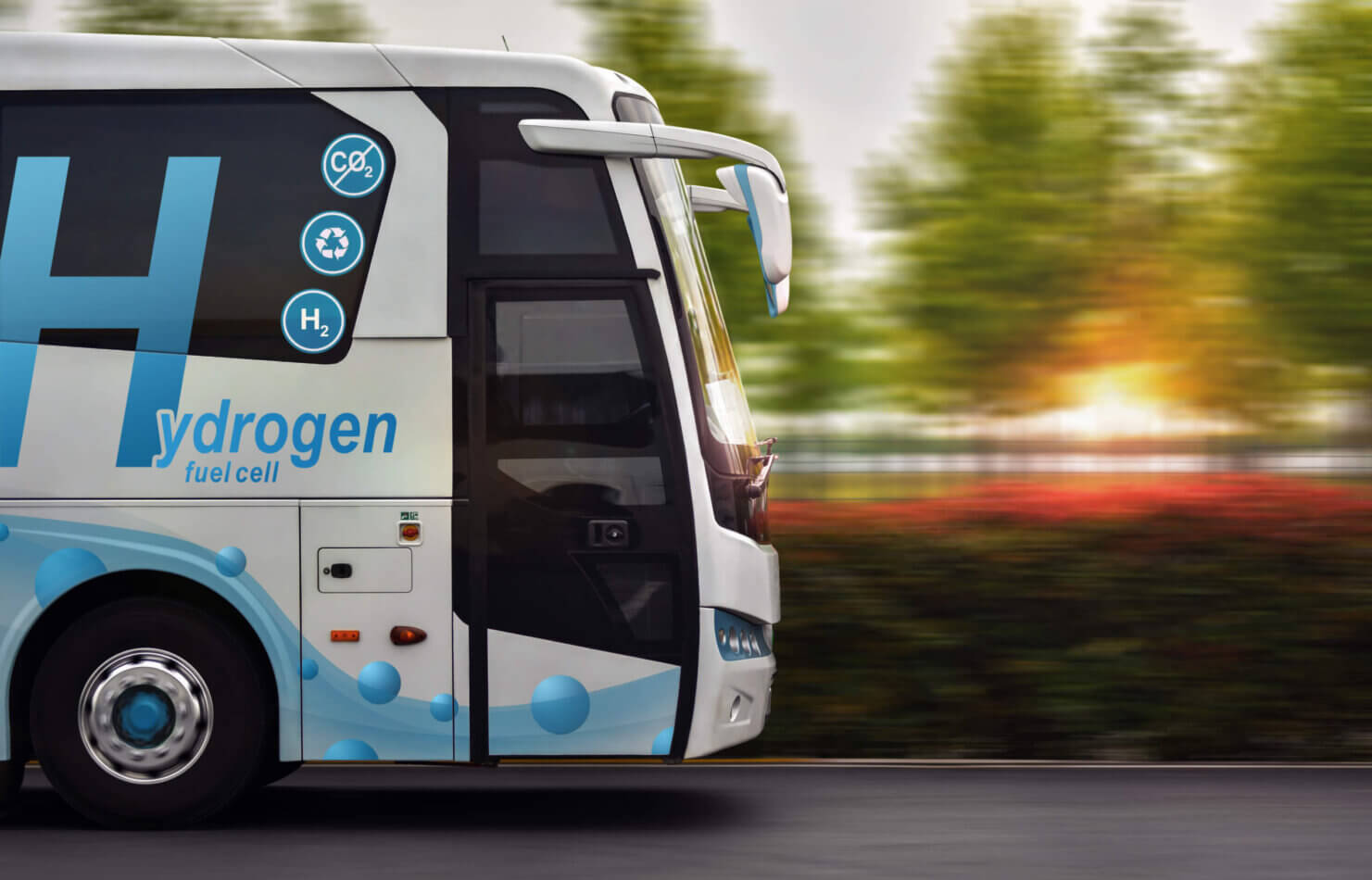European Public Transport: The Hydrogen Bus Vs. The Battery Bus Debate

Table of Contents
Hydrogen Buses: Advantages and Disadvantages
Hydrogen fuel cell buses offer a compelling alternative to traditional diesel buses, promising a zero-emission solution for public transport. However, several factors need careful consideration.
Advantages of Hydrogen Fuel Cell Buses:
- Longer Range: Hydrogen buses boast significantly longer ranges than their battery-electric counterparts, making them suitable for longer routes and less frequent refueling. This is particularly crucial for larger cities and suburban areas.
- Faster Refueling Times: Refueling a hydrogen bus takes only a few minutes, comparable to filling a diesel bus, significantly reducing downtime compared to the hours required for battery charging.
- Potentially Lower Operating Costs: Depending on the method of hydrogen production (more on this later), the operating costs of hydrogen buses could potentially be lower than battery-electric buses, particularly considering the reduced wear and tear on the fuel cell compared to frequent battery charging cycles.
- Reduced Reliance on Rare Earth Minerals: Hydrogen fuel cell technology uses fewer rare earth minerals compared to battery production, mitigating concerns about supply chain vulnerabilities and environmental impact associated with mining these resources.
- Potential for Utilizing Existing CNG Infrastructure: With modifications, existing Compressed Natural Gas (CNG) infrastructure could be adapted for hydrogen refueling, reducing initial infrastructure investment costs.
- Examples in Europe: Cities like Aberdeen (UK) and several cities in Germany are already piloting and deploying hydrogen buses, showcasing the growing interest and practical applications of this technology.
Disadvantages of Hydrogen Fuel Cell Buses:
- Higher Initial Capital Costs: The upfront cost of purchasing a hydrogen bus is considerably higher than that of a battery-electric bus.
- Limited Refueling Infrastructure: The lack of widespread hydrogen refueling infrastructure across Europe presents a major barrier to large-scale deployment.
- Concerns Regarding Hydrogen Production and Storage: The environmental impact heavily depends on the method of hydrogen production. "Grey hydrogen" produced from natural gas has significant carbon emissions, while "green hydrogen" produced via electrolysis using renewable energy is a cleaner alternative but currently more expensive. Safe and efficient hydrogen storage also presents challenges.
- Lower Energy Efficiency: Hydrogen fuel cells generally have lower well-to-wheel efficiency compared to battery-electric systems, meaning more energy is lost in the overall process.
- Environmental Impact of Hydrogen Production: The production of green hydrogen needs significant investment in renewable energy infrastructure to ensure its environmental benefits are maximized. The energy intensity of the process must be considered.
- Challenges for Deployment: The need for specialized infrastructure, higher initial costs, and regulatory hurdles pose significant challenges for widespread adoption.
Battery-Electric Buses: Advantages and Disadvantages
Battery-electric buses represent a more mature technology with a rapidly expanding market presence in Europe. However, this technology also has its limitations.
Advantages of Battery Electric Buses:
- Lower Initial Purchase Costs: Battery-electric buses currently have a lower purchase price than hydrogen buses.
- Rapid Advancements in Battery Technology: Continuous improvements in battery technology are leading to increased range, longer lifespans, and faster charging times.
- Well-Established Charging Infrastructure: Charging infrastructure for electric buses is becoming increasingly common in European cities.
- Economies of Scale: The growing market for battery-electric buses is driving down costs due to economies of scale.
- Lower Operating Costs (Potentially): Electricity is generally cheaper than hydrogen, potentially resulting in lower operating costs, although this can depend on electricity pricing and charging strategies.
- Successful Deployments: Many European cities have successfully deployed large fleets of battery-electric buses, demonstrating the viability of this technology.
Disadvantages of Battery Electric Buses:
- Shorter Range: Battery-electric buses generally have shorter ranges than hydrogen buses, potentially limiting their use on longer routes.
- Longer Charging Times: Charging times for battery-electric buses are significantly longer than hydrogen refueling times.
- Range Anxiety and Route Planning: The limited range requires careful route planning to avoid range anxiety and ensure sufficient charging opportunities.
- Battery Life, Recycling, and Environmental Impact: Concerns remain about the lifespan of batteries, the environmental impact of battery production and disposal, and the need for efficient recycling processes.
- Potential Strain on Electricity Grid: Widespread adoption of battery-electric buses could put a strain on existing electricity grids, requiring upgrades and investment in grid infrastructure.
- Challenges with Deployment: Requires significant investment in charging infrastructure and robust grid capacity.
The Environmental Impact: A Comparative Analysis
A comprehensive environmental assessment requires analyzing the entire lifecycle of both technologies.
Lifecycle Emissions:
A lifecycle assessment (LCA) should consider emissions from manufacturing, operation, and end-of-life disposal of both hydrogen and battery-electric buses. While both aim for zero tailpipe emissions, the overall carbon footprint depends heavily on the source of electricity and hydrogen production.
Source of Energy:
Minimizing the environmental impact hinges on utilizing renewable energy sources for both electricity generation (for battery-electric buses) and hydrogen production (for hydrogen fuel cell buses). Green hydrogen produced via renewable energy is crucial for minimizing the environmental impact of hydrogen buses.
Well-to-Wheel Efficiency:
The well-to-wheel efficiency, considering the energy used from source to driving the vehicle, is generally higher for battery-electric buses than for hydrogen buses. This reflects energy losses in hydrogen production, storage, and fuel cell conversion.
Economic Considerations and Policy Implications
The economic viability and adoption of both technologies are significantly influenced by government policies.
Subsidies and Incentives:
Government subsidies and incentives play a vital role in encouraging the adoption of both hydrogen and battery-electric buses. These policies can help offset initial costs and accelerate market penetration.
Infrastructure Investment:
Significant infrastructure investments are required for both technologies. For battery-electric buses, this involves expanding charging infrastructure, while for hydrogen buses, it requires building a network of hydrogen refueling stations.
Total Cost of Ownership:
A comprehensive comparison of the total cost of ownership (TCO) over the lifespan of both bus types is necessary. Factors like fuel costs, maintenance, and battery/fuel cell replacement should be considered.
Conclusion
The choice between a hydrogen bus and a battery-electric bus for European public transport depends on several factors. While battery-electric buses currently offer lower initial costs and a more established infrastructure, hydrogen buses offer longer ranges and faster refueling times, making them suitable for specific applications. Both technologies have environmental impacts that are heavily dependent on the source of energy – renewable energy is crucial for both to achieve their full sustainability potential. Further research, development, and targeted investment in both technologies are vital for achieving sustainable urban mobility across Europe. The hydrogen bus vs. battery bus debate continues, and a diversified approach may be the most effective path towards decarbonizing public transport. Continue exploring the nuances of the hydrogen bus vs. battery bus debate to ensure informed decisions about the future of clean public transport in Europe.

Featured Posts
-
 Ke Huy Quans Unexpected The White Lotus Appearance A Voice Cameo
May 07, 2025
Ke Huy Quans Unexpected The White Lotus Appearance A Voice Cameo
May 07, 2025 -
 Chat Gpt Maker Open Ai Under Ftc Investigation A Deep Dive Into The Issues
May 07, 2025
Chat Gpt Maker Open Ai Under Ftc Investigation A Deep Dive Into The Issues
May 07, 2025 -
 Warriors Vs Trail Blazers April 11th Game Time Tv Channel And Streaming
May 07, 2025
Warriors Vs Trail Blazers April 11th Game Time Tv Channel And Streaming
May 07, 2025 -
 The Steelers Search For A Future Wide Receiver Combine Implications
May 07, 2025
The Steelers Search For A Future Wide Receiver Combine Implications
May 07, 2025 -
 Rihannas Solo Dinner At Reopened Giorgio Baldi After Wildfire Closure
May 07, 2025
Rihannas Solo Dinner At Reopened Giorgio Baldi After Wildfire Closure
May 07, 2025
Latest Posts
-
 Vs
May 08, 2025
Vs
May 08, 2025 -
 2 0 76
May 08, 2025
2 0 76
May 08, 2025 -
 76 2 0
May 08, 2025
76 2 0
May 08, 2025 -
 Arsenal News Evaluating The Pressure On Mikel Arteta
May 08, 2025
Arsenal News Evaluating The Pressure On Mikel Arteta
May 08, 2025 -
 The Arteta Dilemma Analyzing Collymores Arsenal Criticism
May 08, 2025
The Arteta Dilemma Analyzing Collymores Arsenal Criticism
May 08, 2025
